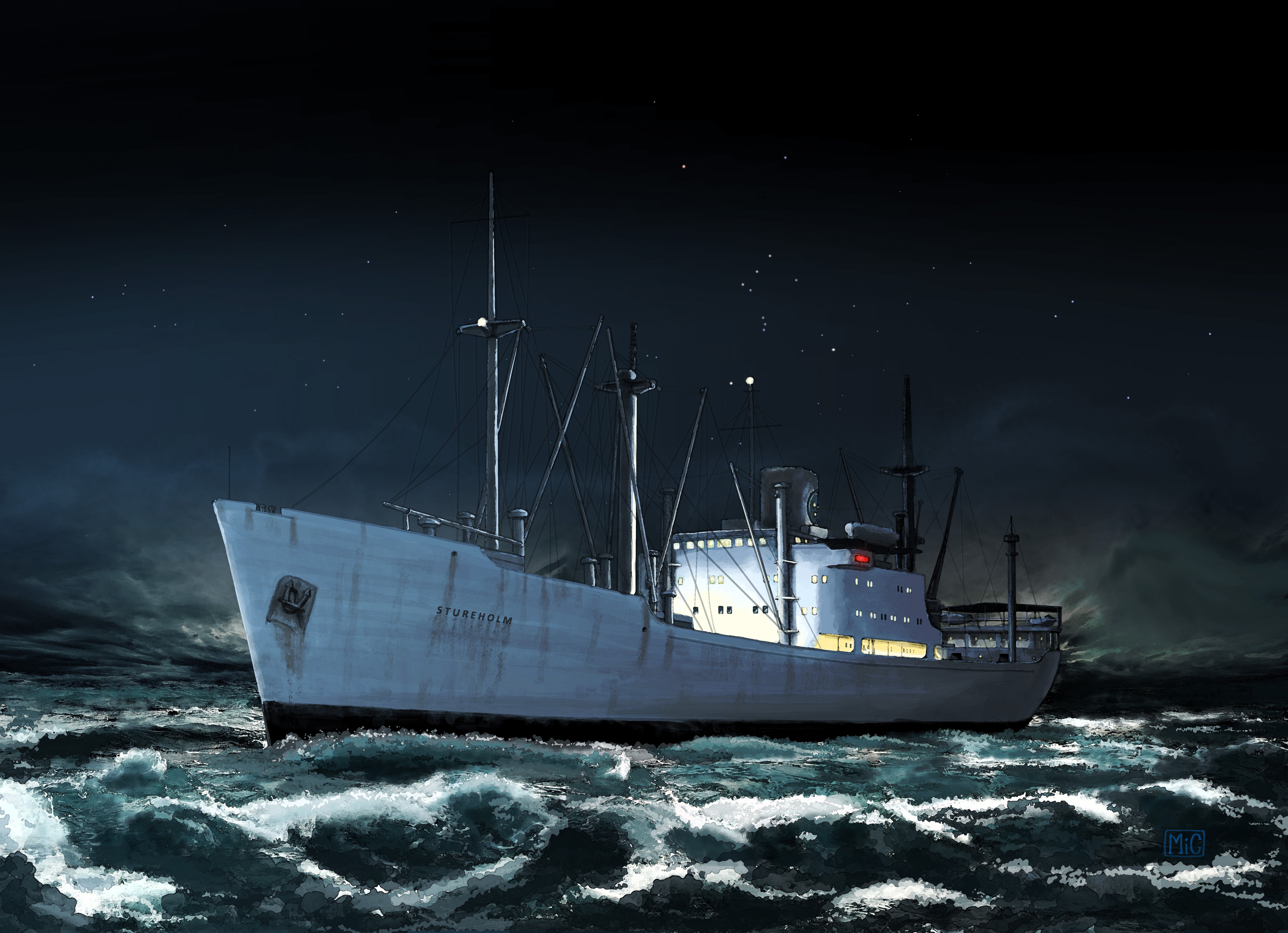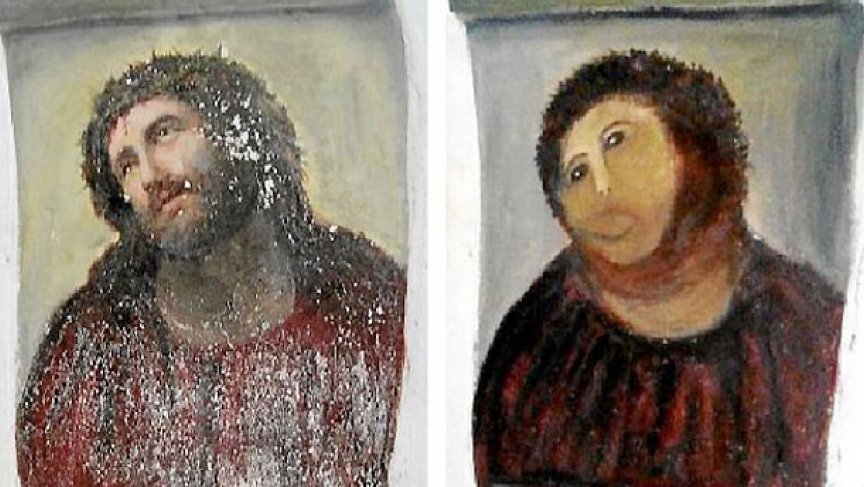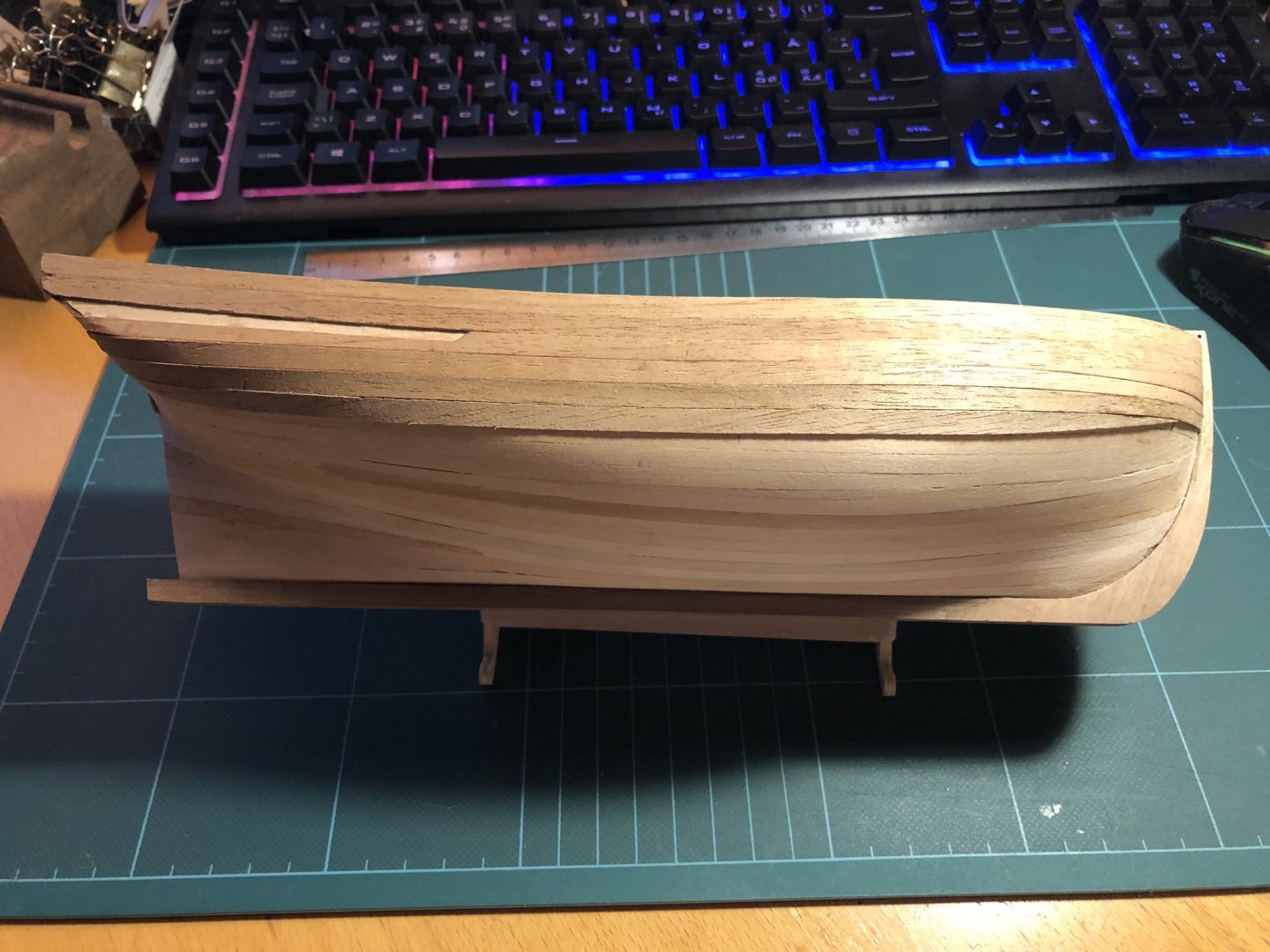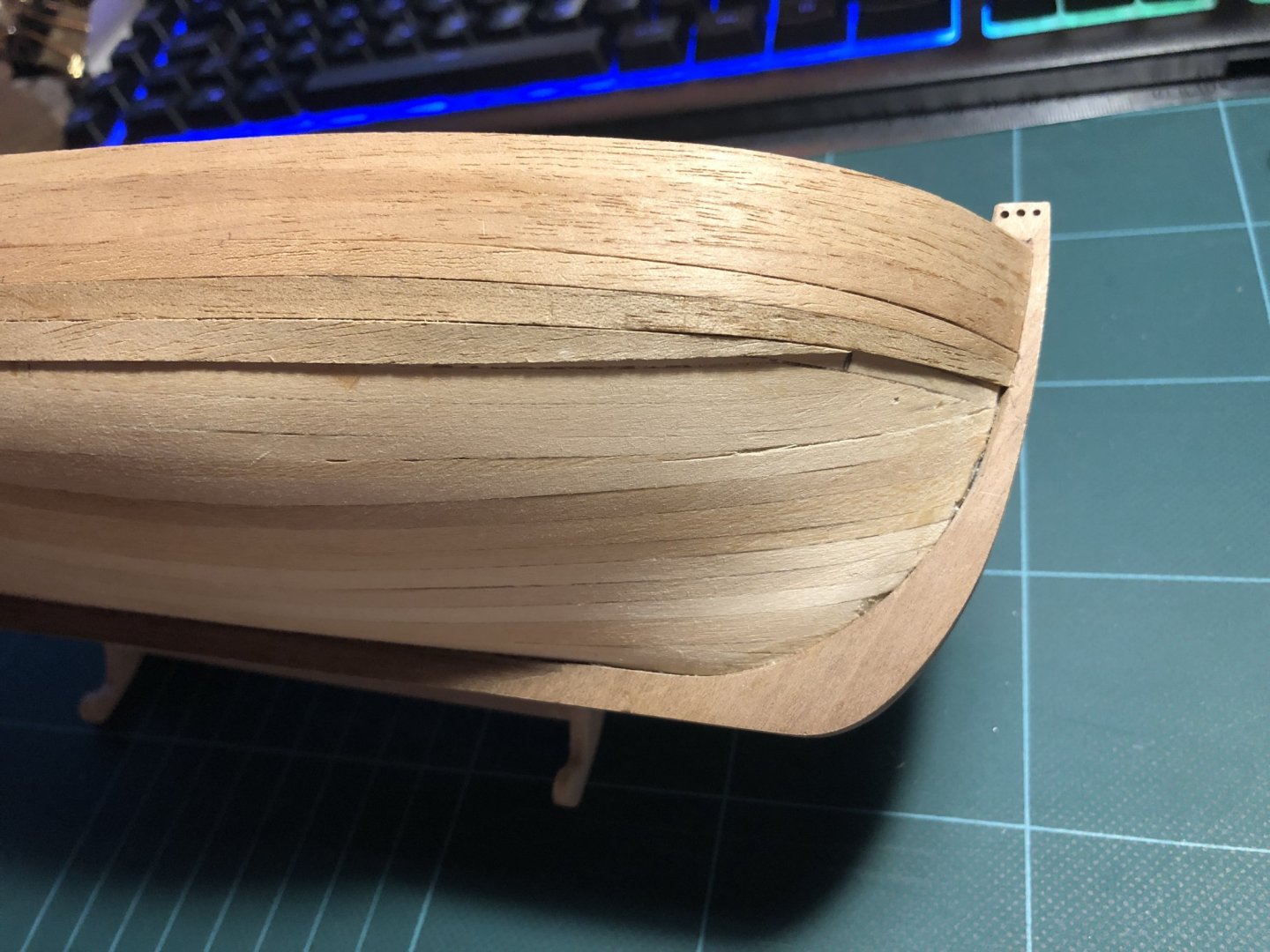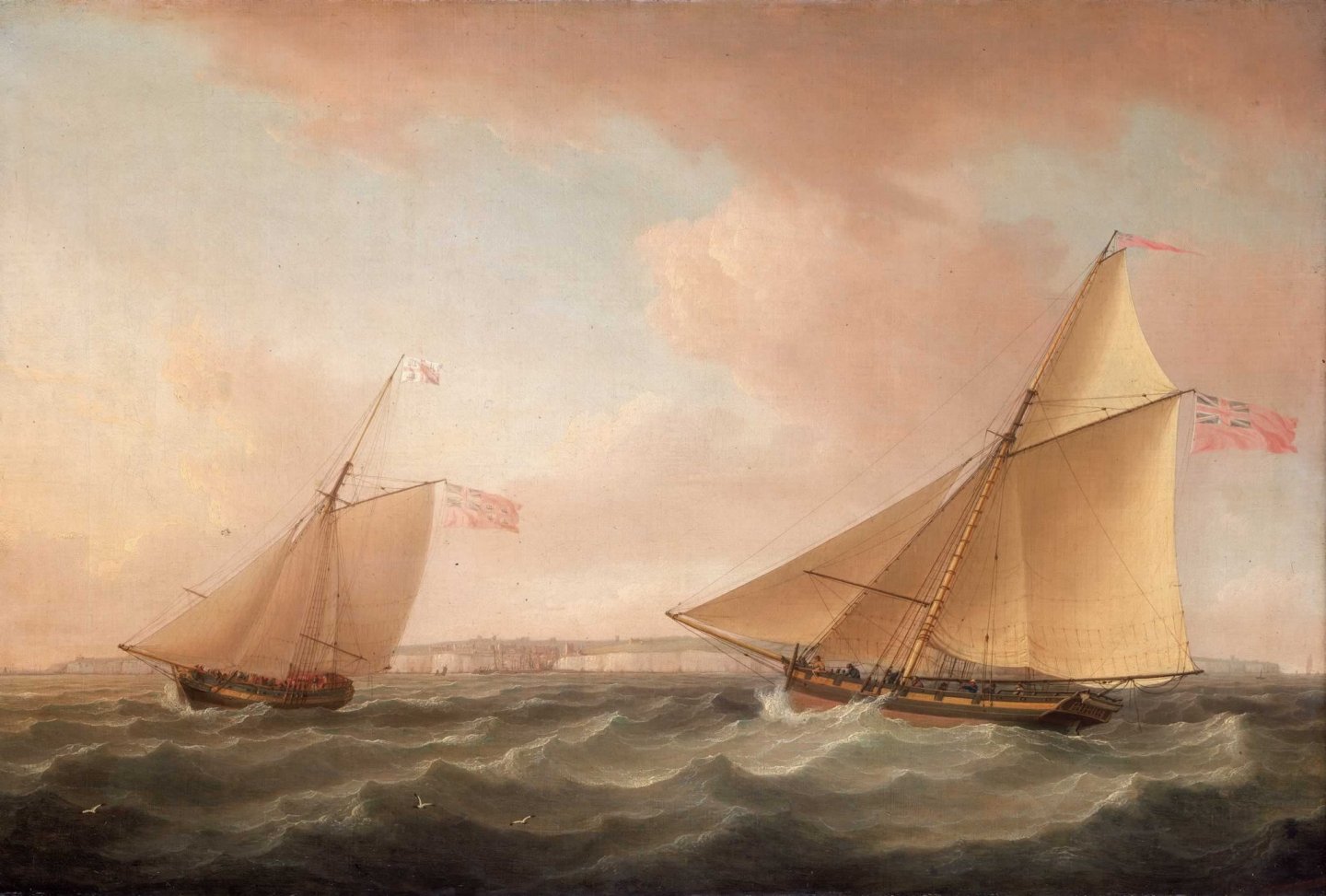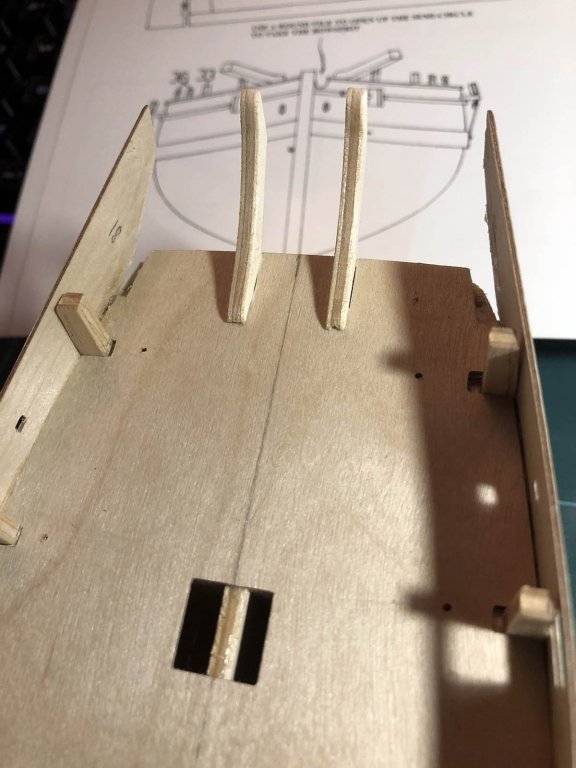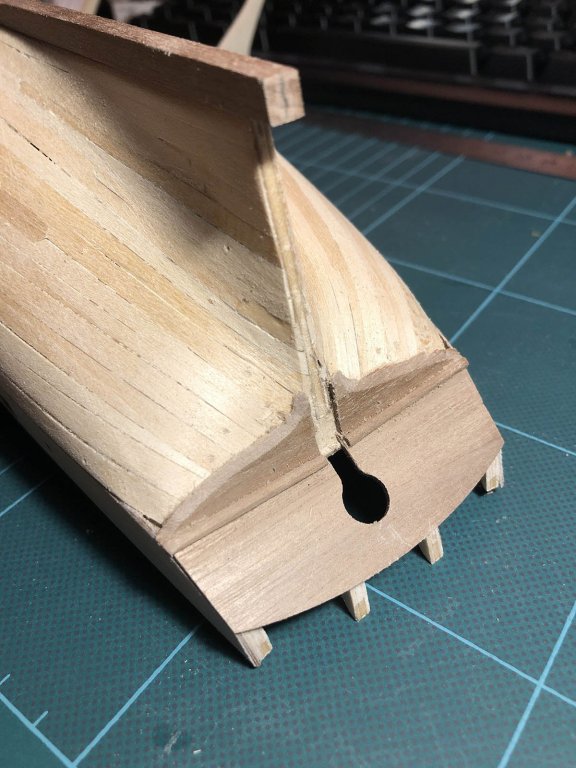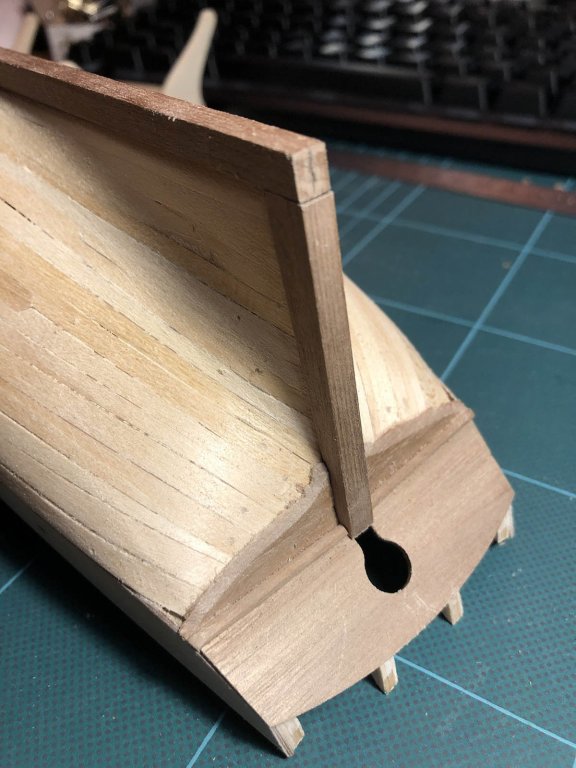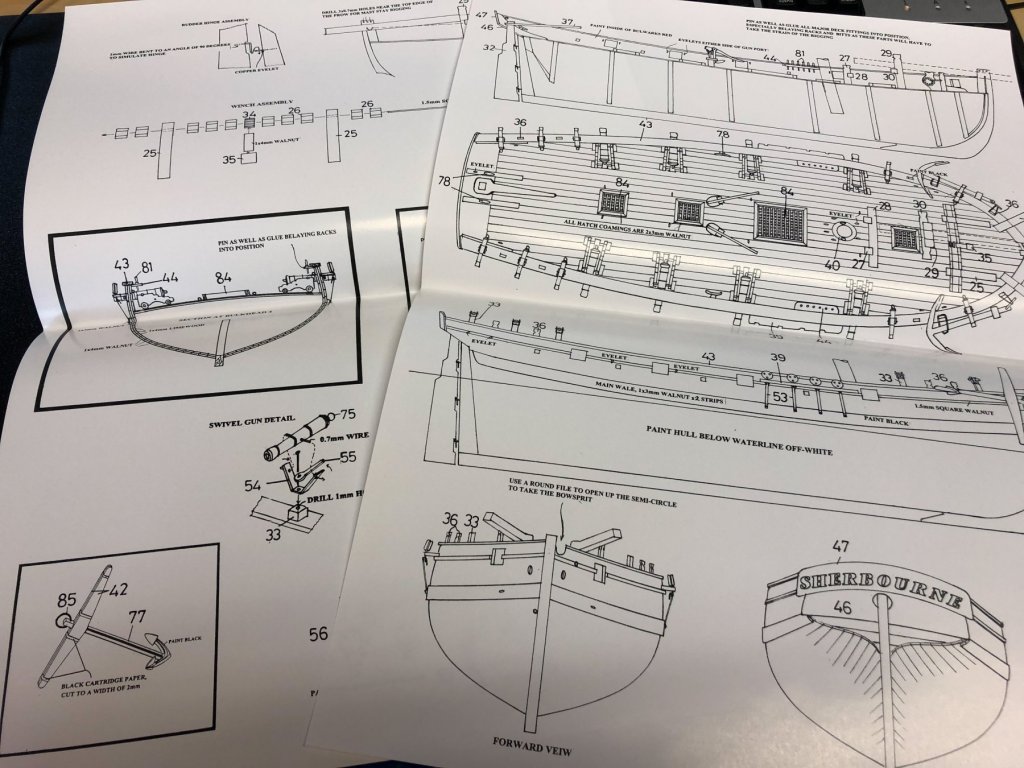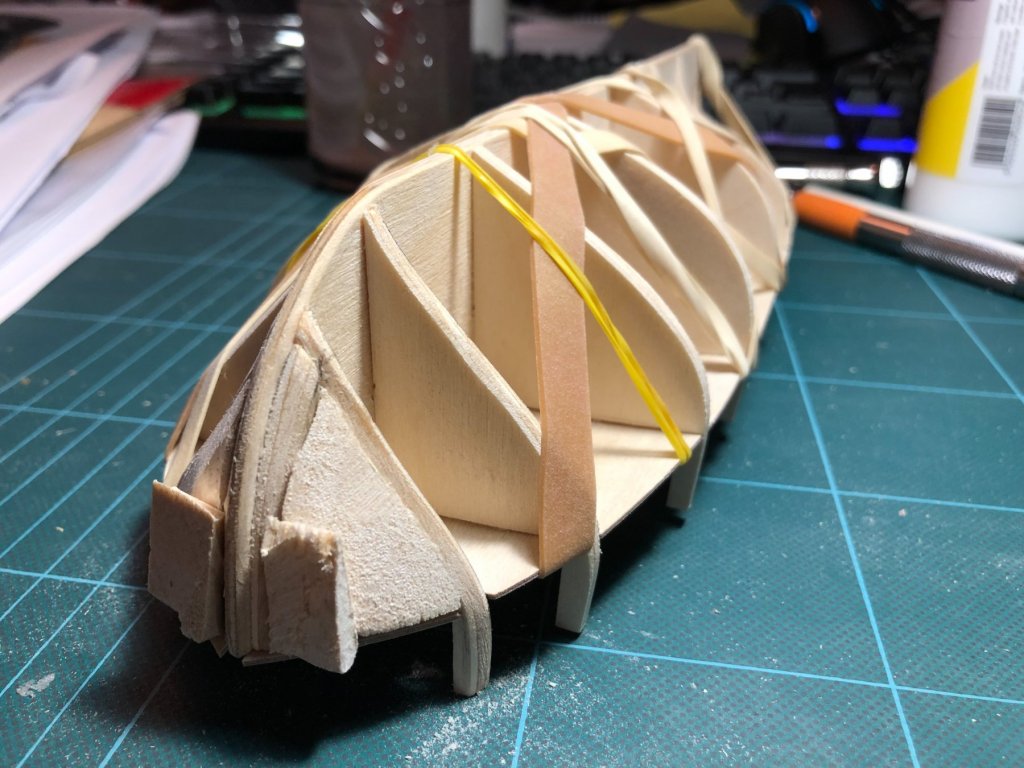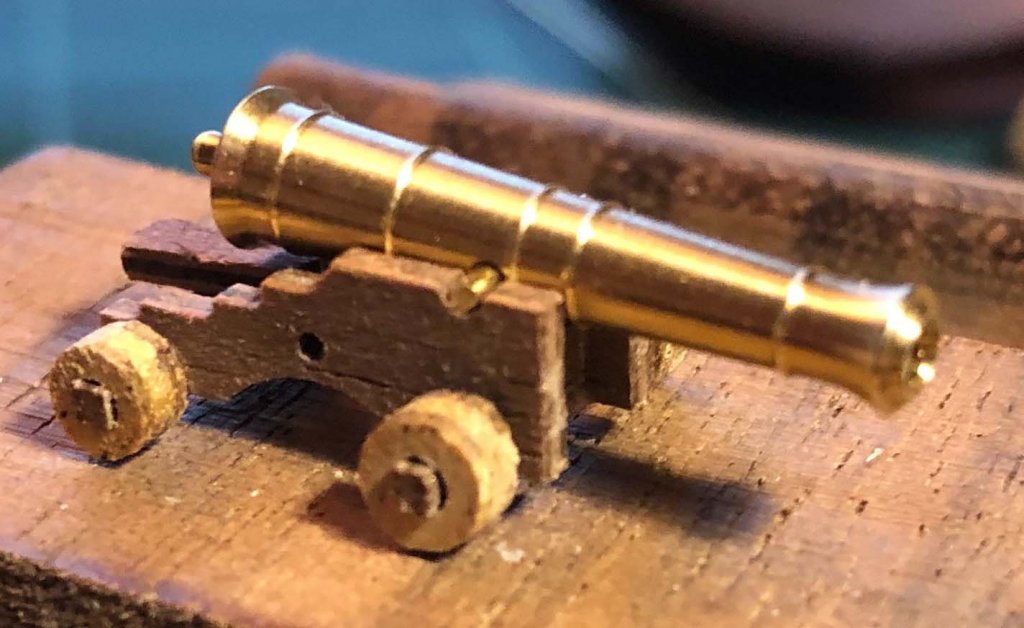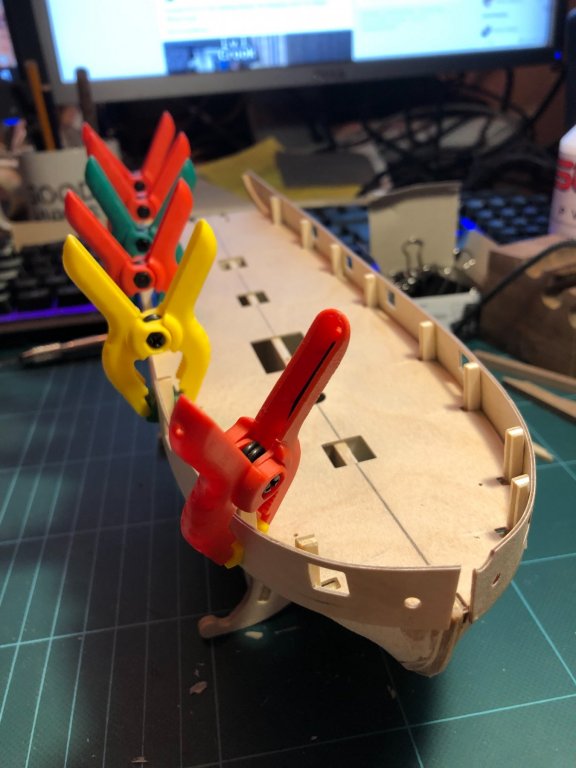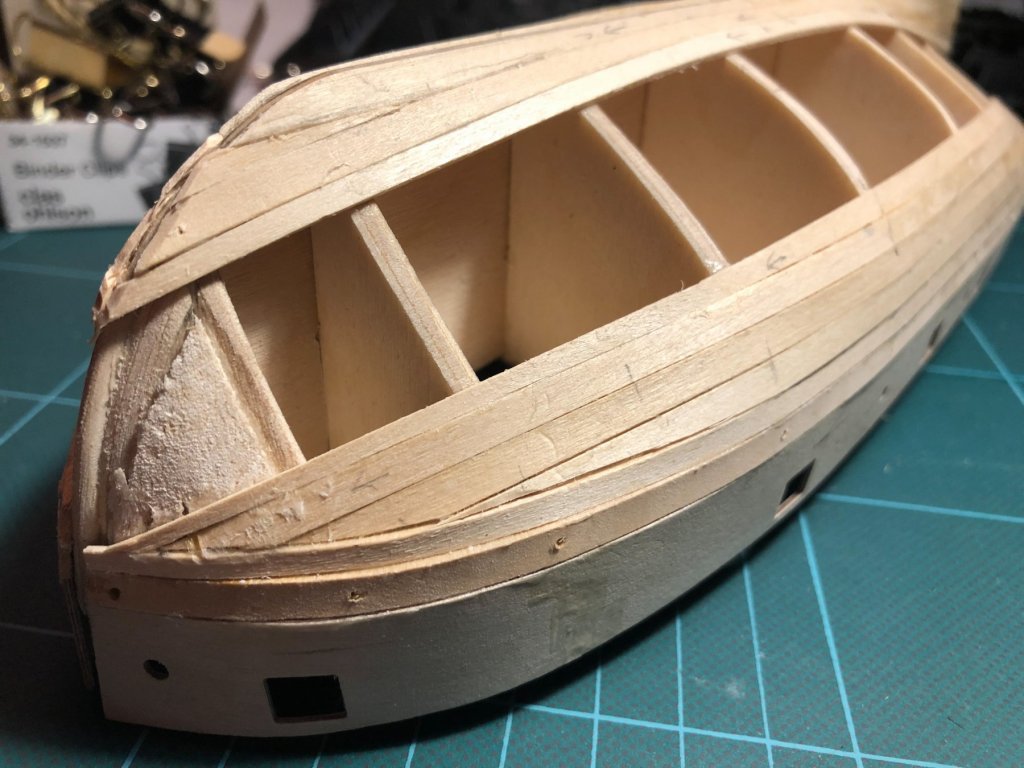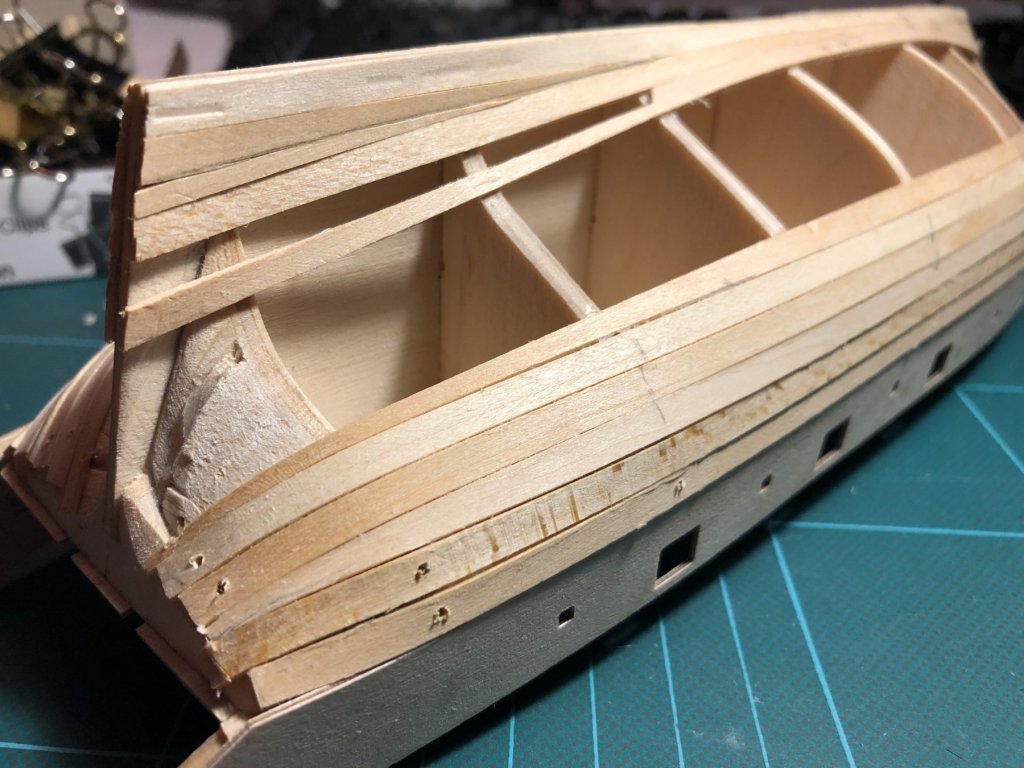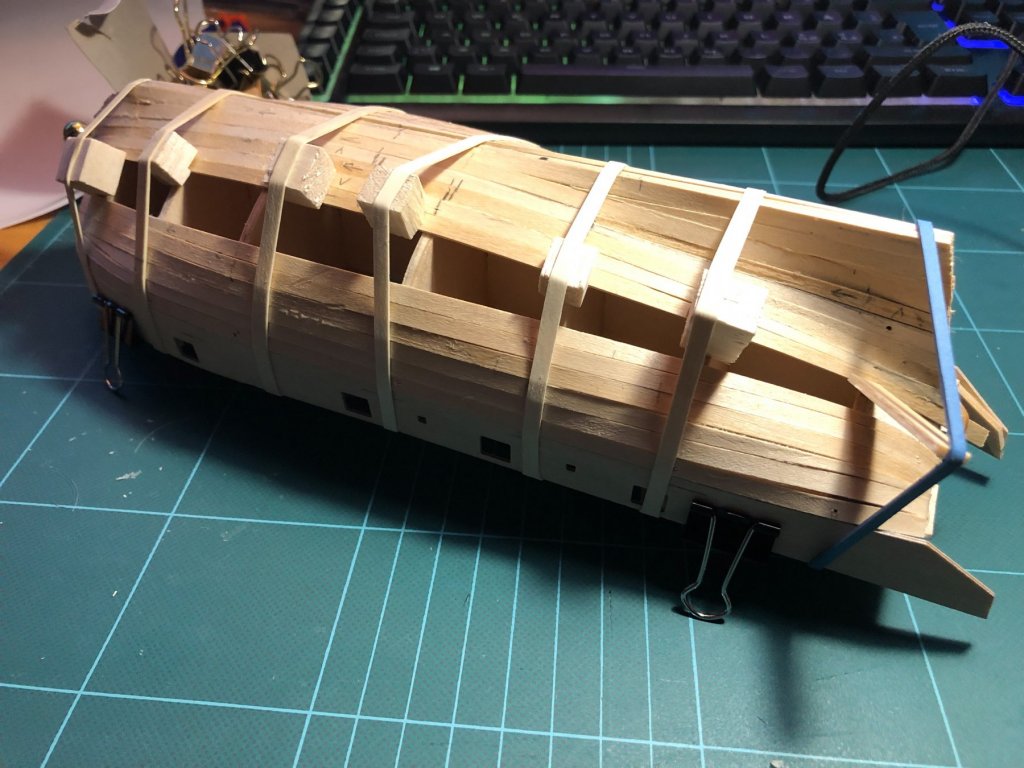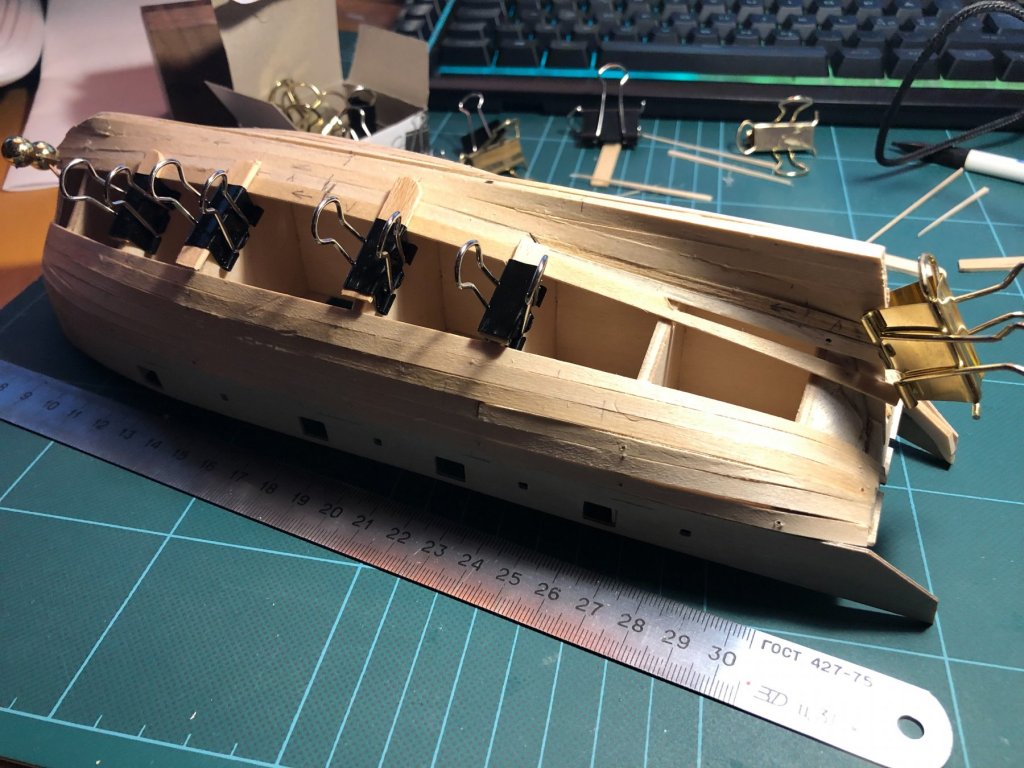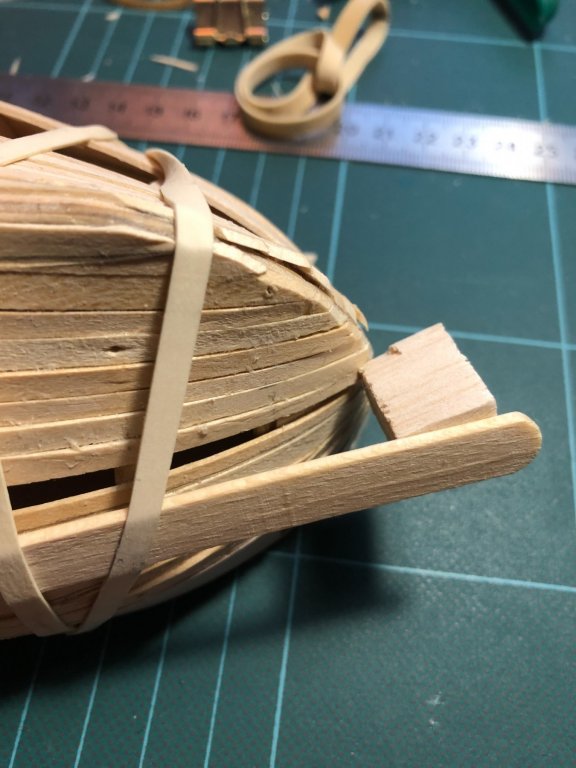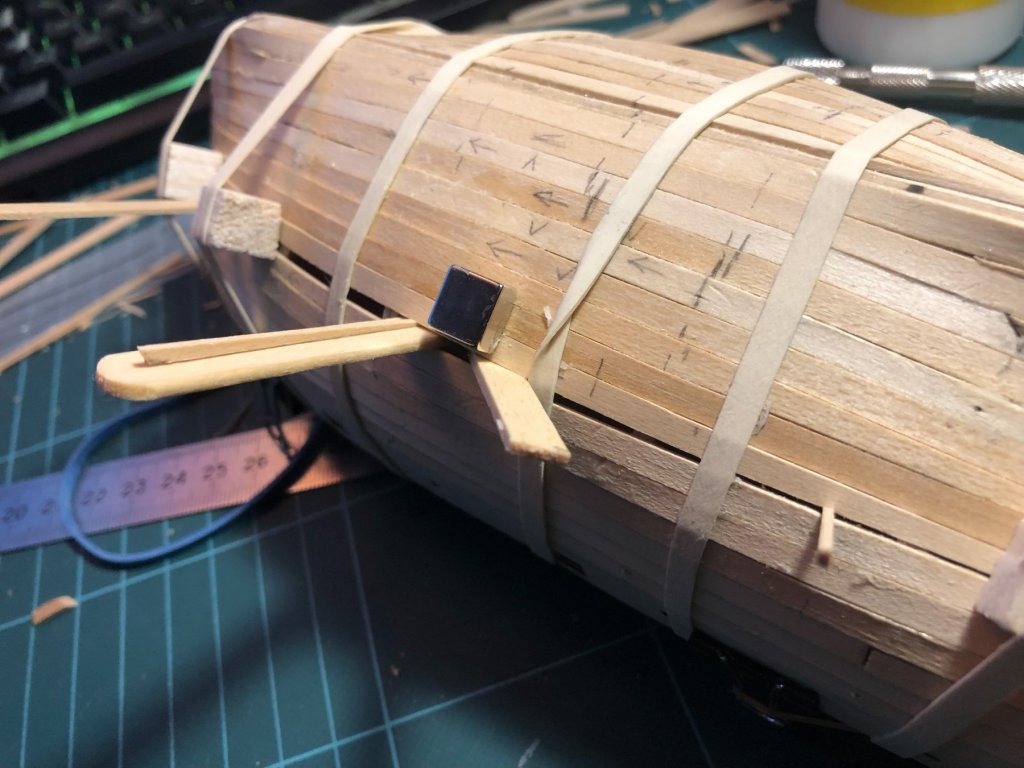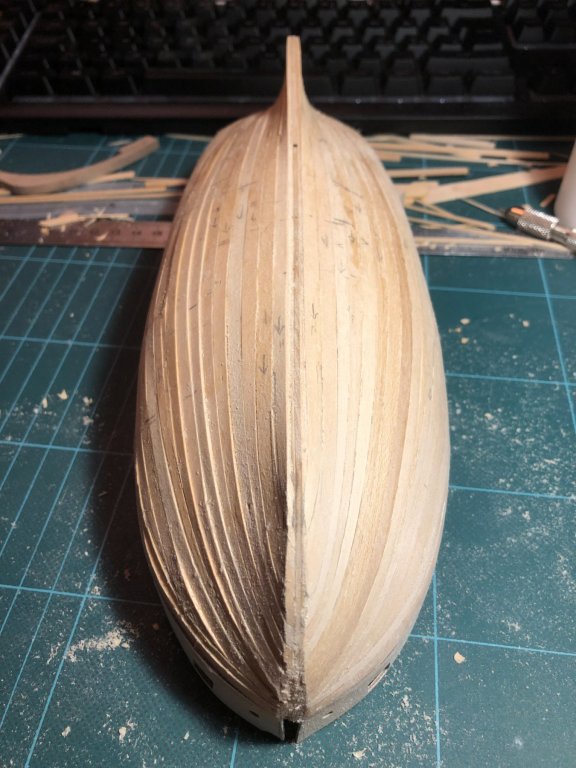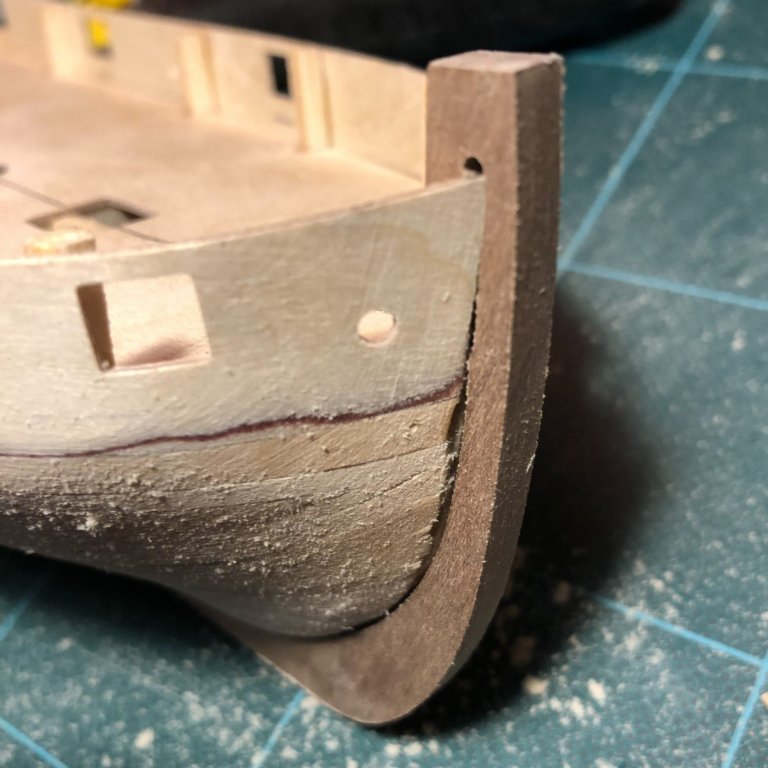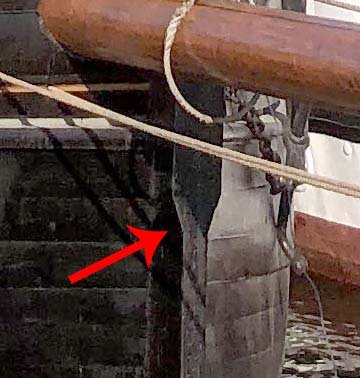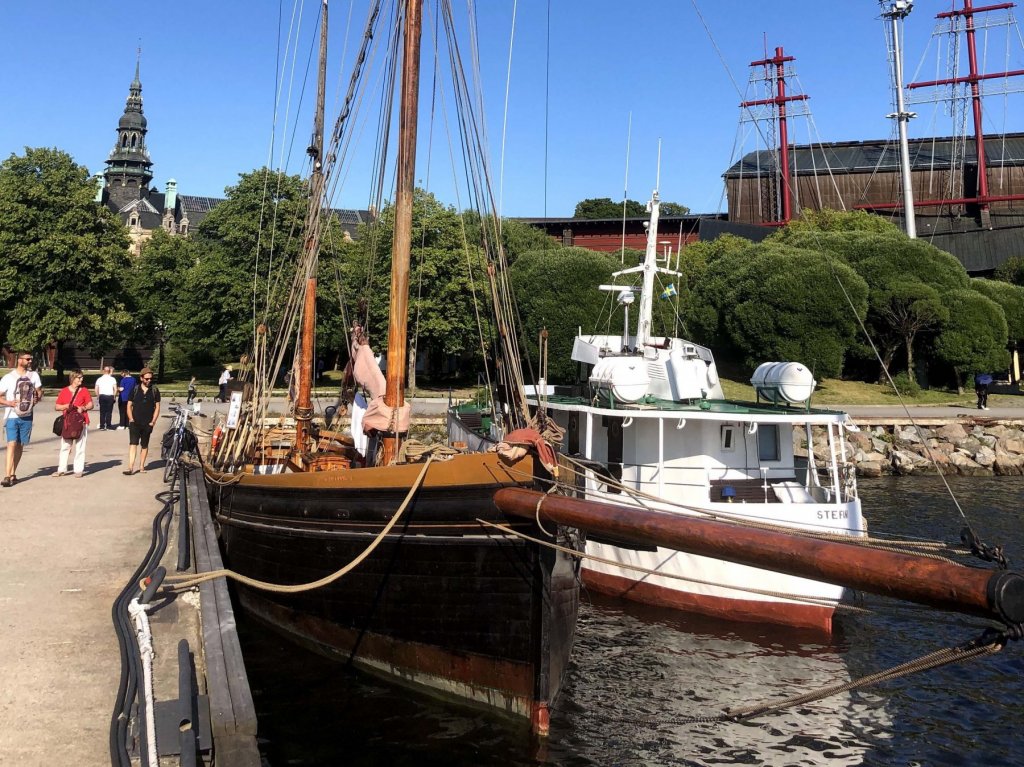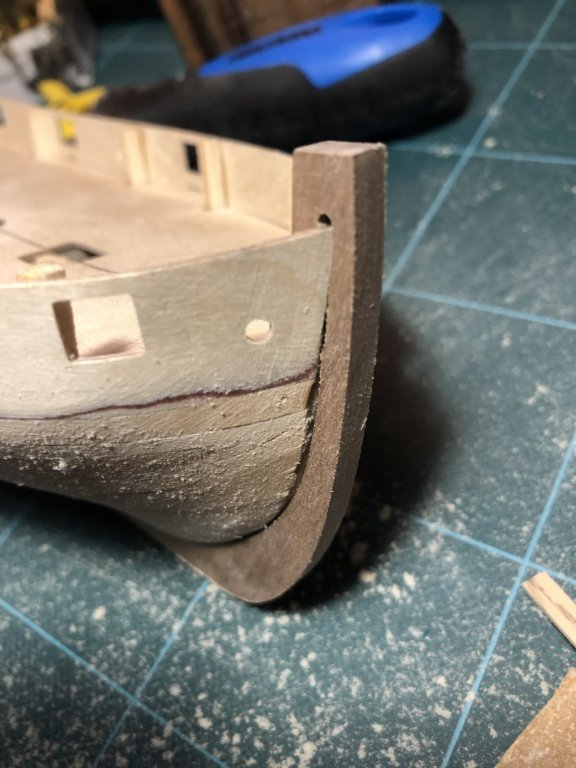-
Posts
49 -
Joined
-
Last visited
Content Type
Profiles
Forums
Gallery
Events
Everything posted by mic-art
-
NEW Vasa kit from Artesania Latina -- looks to be quite good
mic-art replied to md1400cs's topic in Wood ship model kits
The flag also look wrong. At the time naval ships could use either rectangular or the "three tongued" flag used today. We just don't know for certain what was used on Vasa. Personally, I think it looks better with the three tounged. -
Flying Fish has a good theory but I wonder if it could be used for tap adjustment of the blade?
-
Funny, I said to the Admiral just the other day that the nice part about this forum, is the politeness lack of heated topics, but here it is getting warm JerseyCity Frankie said something about the lack of accurate litterature in the topic. It seems there's a lot of knowledge here, and I suppose not everyone would have time to write a book, but perhaps it would be manageable writing an article in a wiki, on for example wikipedia.org or www.fandom.com. It is just an idea and I'm probably not the first to suggest it. //Mikael
-
Thanks for the book tip! Found a cheap paperback copy at 15 euro that I ordered. https://www.bokus.com/bok/9781848322189/rigging-period-fore-and-aft-craft/
- 104 replies
-
- sherbourne
- caldercraft
-
(and 1 more)
Tagged with:
-
Slow progress on second planking. Someone advised using 0.5 mm planks so I bought some 5mm during our vacation in Stockholm. It is much easier to bend. I do not have any good clamps for this stage so I glue with CA glue. The first 4 planks was easy to fit but then it got more difficult to make planks follow smooth In the stem. I can not see how to do that correctly. Anyway I had to end the planks as in the photo. I figure the wale will cover the ugly joints.
- 14 replies
-
- sherbourne
- caldercraft
-
(and 1 more)
Tagged with:
-
Great to get help from initiated people like you guys, thank you!
-
The Caldercraft Cutter Sheroune kit comes with some hideous brass letters to mount in the stern. I have tried to find any reference on how it would have looked on a English cutter from that period, but have failed to find any. From paintings it looks as if the ships only had decorations in various forms - but no name. Is there any "proof" that small ships like Sherbourne actually did have a name displayed? //Mikael
-
Hej Jörgen och tack för ditt stöd! I suppose you mean "The Naval Cutter Alert (Anatomy of the Ship) "? I have ordered a used copy of "Skeppet" by Björn Landström from a second hand bookshop, I will study that to get some more in depth knowledge in the ship lingo. Meanwhile and most likely in the future too, I will rely on google.
- 14 replies
-
- sherbourne
- caldercraft
-
(and 1 more)
Tagged with:
-
Thank you for your input Tony. You are correct in that the planks would go over the edge of the transom, and it will, with the second planking. 😉
- 14 replies
-
- sherbourne
- caldercraft
-
(and 1 more)
Tagged with:
-
Hello and thanks for all the replies and support! Here is a small update on my slow progress. I fitted the middle sternposts first after the first planking was sanded. At this point I noticed that the outer stern timbers where in the wrong angle so I removed them with the help of some methylated spirit (technical alcohol in english?), which dissolved the PVA glue like a charm. Then fitted them again with the middle stern timbers as guide. Next step was to plank the stern. There was a gap between transom and the planking which I covered with a bullnose batten. Would that be historically out of line? I dry fitted the stern post to achieve a snug fit for the stern planking. I will fit it permanently after the second planking (which I am a bit afraid of) I hope my writing is comprehensive as I have to learn what the parts of a ship is called, not only in english, but also in Swedish 😉
- 14 replies
-
- sherbourne
- caldercraft
-
(and 1 more)
Tagged with:
-
I must say it looks very nice! So you would recommend a pin pusher then? I was thinking of buying one but I got the feeling that people think it is a waste of money. Did you use it for your second planking too?
- 104 replies
-
- sherbourne
- caldercraft
-
(and 1 more)
Tagged with:
-
Greetings! I have been hesitant whether to start a build log or not as I don’t want to jinx it. What if I never finish, then I will stand in shame in public instead of just hiding the object of shame on a shelf to be forgotten. Anyway here I am and I hope to make it to the end. This is my first build in 30 years so excuse my lack of skill and technique. 😉 I will try to recapitulate what I have done so far: After a lot of pondering what and where to buy I finally ordered the kit from Cornwall model boats in the UK. It arrived a week later together with some tools, paints and glue. While waiting for the kit to arrive I read all Sherbourne build logs I could find to be prepared. Upon unboxing the first thing I noticed was that the plans where big – much bigger than I have room for. Thus I decided to scan the plans and rearrange the layout so they fit on a A3 paper. Not many problems fitting the bulkheads but I had and issue were the #4 and #5 bulkhead exceeded the false keel so I had to sand them down so they are flush with the false keel. Member AH1973 had similar issue in his build: I decided to add filler blocks in bow and stern as advised by other builders. In the picture you see I had to add some more to adjust the shape of the bow. Here you see the false deck being glued. I think I was a bit over enthusiastic bevelling the stern bulkhead. Before I fitted the bulwarks I assembled a gun to test that the gun ports where in correct position. Fitting of the bulwarks. As Stockholm Tar https://modelshipworld.com/profile/427-stockholm-tar/ suggested, I cut half the way though all the frames at deck level to make it easier to remove them at a later stage. I decided to fit the keel parts after first planking. First planking Here comes a trickier part, shaping and bending planks so they sit nice, one next to the other. I was not so successful in tapering the planks correctly, hence the ugly bow. For the second planking I must be more careful. I experimented with stealers in the stern. At first I tried using the brass pins that comes with the kit which didn’t work at all for me. They bent very easily and did not sit tight. Instead I use reconfigured paperclips where possible and rubber bands and pins in the ends. For the big paperclips I used popsicle sticks. (notice the USSR steel ruler with price etched in to it in the front ) When the paperclips where to big I used rubber bands and blocks of balsa to concentrate the pressure. Need is the mother of invention. Clamping down a thin plank in the bow where ordinary clamps just slipped. I also bought some super strong magnets that I used in the end. Here I use wedges to ensure the planks where flush with each other. How to fit that last plank in a better manner? First layer finished and the port(?) side rough sanded. As you can see – not a pretty planking. Looks more like clinker to me. Dry fitting of the stem and keel. At this point I discovered that the keel was a couple of millimetres to short in the stern, in the juncture with the stern post. The reason I discovered, is that the notch in the false deck is smaller than the thickness of the stem. I cut recesses in the stem so it fitted better and voilà, the keel and stern post fitted! As advised by others, I drilled the holes in the stem at this point. I drilled from both sides to avoid splinter. For measuring I used a precision compass (Rotring). I cut a bearding line in the stem so far. Next will be gluing the keel and stem and then fit the stern counter. //Mikael
- 14 replies
-
- sherbourne
- caldercraft
-
(and 1 more)
Tagged with:
-
Hej Urban! I see you found your way here too from ifokus.se
-
Unique 500 year old shipwreck in the Baltic sea
mic-art replied to mic-art's topic in Nautical/Naval History
My pleasure! Now i’m resting my feet after a visit at the Vasa museum. Took a bazillion photos 😉 -
I saw this in the news on swedish television today. This was the only news in english i could find at the moment. https://www.sciencealert.com/a-mysterious-500-year-old-shipwreck-has-been-found-at-the-bottom-of-the-baltic-sea
About us
Modelshipworld - Advancing Ship Modeling through Research
SSL Secured
Your security is important for us so this Website is SSL-Secured
NRG Mailing Address
Nautical Research Guild
237 South Lincoln Street
Westmont IL, 60559-1917
Model Ship World ® and the MSW logo are Registered Trademarks, and belong to the Nautical Research Guild (United States Patent and Trademark Office: No. 6,929,264 & No. 6,929,274, registered Dec. 20, 2022)
Helpful Links
About the NRG
If you enjoy building ship models that are historically accurate as well as beautiful, then The Nautical Research Guild (NRG) is just right for you.
The Guild is a non-profit educational organization whose mission is to “Advance Ship Modeling Through Research”. We provide support to our members in their efforts to raise the quality of their model ships.
The Nautical Research Guild has published our world-renowned quarterly magazine, The Nautical Research Journal, since 1955. The pages of the Journal are full of articles by accomplished ship modelers who show you how they create those exquisite details on their models, and by maritime historians who show you the correct details to build. The Journal is available in both print and digital editions. Go to the NRG web site (www.thenrg.org) to download a complimentary digital copy of the Journal. The NRG also publishes plan sets, books and compilations of back issues of the Journal and the former Ships in Scale and Model Ship Builder magazines.

